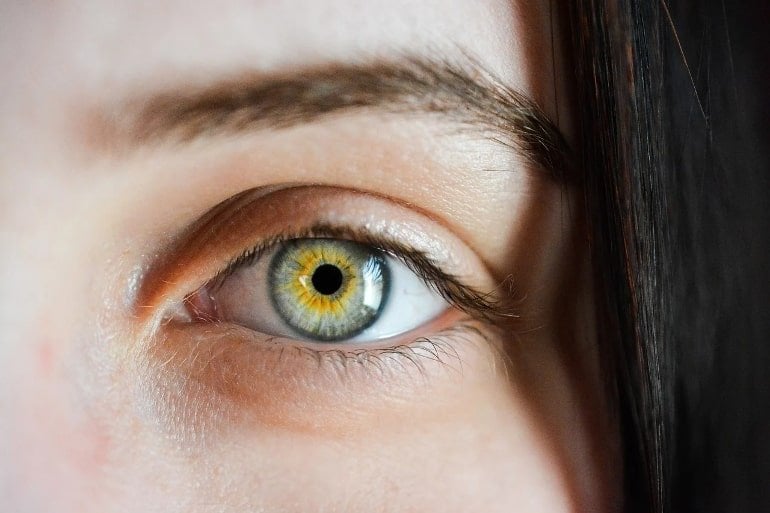
Vision loss and mental health are deeply intertwined. This exploration delves into the complex psychological effects of losing sight, examining emotional responses like anxiety, depression, and isolation. We’ll explore coping mechanisms, the crucial role of social support, and how vision loss can impact self-esteem and body image. Different types of vision loss, such as macular degeneration and glaucoma, will be compared to understand their varying emotional impacts.
Beyond the initial emotional shock, we’ll also investigate the mental health conditions frequently associated with vision loss. Increased stress, reduced quality of life, and specific disorders like anxiety and depression will be analyzed. The prevalence of these issues across different age groups will be examined, along with risk factors and potential triggers. We’ll also address the critical need for accessible mental health resources.
Impact of Vision Loss on Mental Well-being
Vision loss, whether gradual or sudden, can have a profound and multifaceted impact on mental well-being. The loss of sight, a sense deeply intertwined with our identity and daily functioning, can trigger a range of emotional responses, from anxiety and depression to feelings of isolation and loss of independence. Understanding these psychological effects and the available coping mechanisms is crucial for supporting individuals experiencing vision loss.The experience of vision loss often involves a complex interplay of physical, emotional, and social adjustments.
The loss of visual input can lead to feelings of vulnerability, uncertainty, and even fear. Furthermore, the need for adaptation in daily tasks and routines can be stressful, creating emotional distress and potentially impacting self-esteem and body image.
Psychological Effects of Vision Loss
Vision loss can significantly affect an individual’s psychological well-being. Anxiety, often stemming from the uncertainty of the future and the perceived loss of control, is a common response. Depression, fueled by feelings of isolation, hopelessness, and decreased self-efficacy, can also arise. The inability to participate in previously enjoyed activities and social interactions can contribute to a sense of isolation and loneliness.
These emotional responses can vary greatly depending on individual factors, such as personality, support system, and coping mechanisms.
Coping Mechanisms for Individuals with Vision Loss
Individuals with vision loss employ various coping strategies to manage their mental health. These strategies can include joining support groups or online communities to connect with others facing similar challenges. Seeking professional help, such as therapy or counseling, can provide valuable tools and strategies for managing stress and emotional distress. Learning new skills and technologies, like screen readers or specialized software, can enhance independence and restore a sense of control over daily life.
Furthermore, engaging in activities that promote relaxation, such as meditation or mindfulness exercises, can be beneficial in managing stress and promoting emotional well-being.
Role of Social Support Networks
Strong social support networks play a critical role in mitigating the negative psychological effects of vision loss. Family, friends, and support groups provide emotional encouragement, practical assistance, and a sense of belonging. These networks can help individuals with vision loss navigate the challenges of everyday life, reducing feelings of isolation and fostering a sense of community. The sharing of experiences and the provision of mutual support can create a supportive environment that helps individuals cope with the emotional adjustments associated with vision loss.
Impact on Self-Esteem and Body Image
Vision loss can affect self-esteem and body image, particularly when it leads to a change in how individuals perceive their own appearance and capabilities. Loss of independence in daily tasks can contribute to feelings of inadequacy and a decrease in self-confidence. The need for assistance with activities can sometimes lead to a feeling of diminished self-worth. Addressing these concerns requires acknowledging the impact on self-perception and actively working on building self-esteem and a positive body image through tailored support and resources.
Comparison of Emotional Impacts Across Different Types of Vision Loss
| Type of Vision Loss | Potential Emotional Impacts |
|---|---|
| Macular Degeneration | Potential for anxiety related to loss of central vision, impacting activities like reading and driving. Depression may arise from the gradual nature of the vision loss and the anticipated future limitations. Reduced self-esteem may occur due to difficulty with tasks that rely on clear vision. |
| Glaucoma | Anxiety about the progression of the disease and potential for permanent vision loss. Depression may stem from the fear of losing vision gradually and the need to adapt to increasingly limited vision. The gradual nature of vision loss may lead to feelings of hopelessness and isolation. |
| Cataracts | Anxiety surrounding the surgical procedure and potential complications. Temporary depression or frustration due to the interim vision impairment before surgery. Adjustment to the improved vision post-surgery can be emotionally challenging, especially if there are pre-existing mental health conditions. |
Mental Health Conditions Associated with Vision Loss
Vision loss, whether gradual or sudden, can significantly impact a person’s mental well-being. Beyond the obvious physical challenges, the emotional toll can be profound, leading to a range of mental health concerns. Understanding these challenges is crucial for providing effective support and interventions for individuals navigating this experience.The experience of vision loss often intertwines with feelings of isolation, frustration, and anxiety.
Reduced independence and the potential for social withdrawal can create a vicious cycle of declining mental health. Furthermore, adapting to a new reality with limitations can be extremely stressful, impacting self-esteem and overall quality of life.
Common Mental Health Challenges
Individuals experiencing vision loss frequently face increased stress levels. This stress stems from adjusting to a new reality, the practical challenges of daily tasks, and the potential for social isolation. Reduced quality of life is another common theme, as vision loss can limit opportunities for work, social activities, and personal pursuits. These difficulties can contribute to feelings of helplessness and despair, making proactive mental health support crucial.
Specific Mental Health Disorders
Vision impairment is linked to an increased risk of developing anxiety and depression. The uncertainty and fear associated with adjusting to reduced vision can trigger anxiety, manifested in worry, panic, and difficulty concentrating. Similarly, the loss of independence and the potential for social isolation can contribute to feelings of sadness, hopelessness, and loss of interest in activities, which are key symptoms of depression.
Moreover, the emotional burden of adapting to vision loss can exacerbate pre-existing mental health conditions.
Prevalence Across Age Groups
The impact of vision loss on mental health varies across different age groups. Younger adults may struggle with adjusting to the limitations on their social life and career prospects. Middle-aged individuals may find it challenging to maintain their independence and manage the responsibilities of family and work. Older adults with vision loss may face additional challenges related to decreased social interaction and the potential for increased isolation.
The severity of these challenges often depends on individual circumstances, support systems, and access to resources.
Risk Factors for Mental Health Issues
| Risk Factor | Description |
|---|---|
| Pre-existing mental health conditions | Individuals with a history of anxiety or depression are at higher risk for developing or worsening these conditions following vision loss. |
| Social support system | Individuals with limited social support networks may experience more significant mental health challenges. |
| Financial strain | Financial difficulties related to vision loss, such as increased medical expenses or loss of income, can exacerbate stress and contribute to mental health issues. |
| Access to assistive technology and resources | Limited access to assistive technology and resources for managing vision loss can contribute to feelings of frustration and isolation. |
| Severity of vision loss | The degree of vision impairment plays a role in the extent of mental health challenges experienced. More significant vision loss often correlates with greater difficulty adjusting and higher risk. |
Potential Triggers for Exacerbated Mental Health Challenges
A variety of factors can trigger or exacerbate mental health challenges for individuals with vision loss. These include:
- Difficulty with daily tasks: Tasks that were previously simple, like reading or driving, may become significantly more challenging, leading to frustration and feelings of helplessness.
- Social isolation: Reduced ability to participate in social activities and maintain relationships can lead to feelings of loneliness and isolation.
- Loss of independence: The need for increased assistance with daily tasks can diminish a sense of control and independence, impacting self-esteem and self-worth.
- Financial strain: Increased medical costs, assistive technology expenses, and loss of income can create significant financial stress, further impacting mental well-being.
- Negative experiences with healthcare providers: Experiences of being poorly understood or not receiving adequate support can exacerbate feelings of frustration and hopelessness.
Access to Mental Health Resources for Vision-Impaired Individuals

Navigating mental health challenges is difficult for everyone, but for individuals with vision loss, the path can be even more intricate. The unique needs and experiences of people with vision impairments often require specialized support to ensure they receive effective and appropriate mental health care. This includes not just the services themselves, but also the accessibility and cultural sensitivity of the resources available.The accessibility of mental health services for people with vision loss is not uniform across the globe.
Geographical limitations, financial barriers, and a lack of culturally tailored support can create significant hurdles. Understanding these obstacles and implementing solutions is crucial for improving the mental well-being of this population. This exploration dives into the available support systems, the challenges they face, and potential strategies to enhance access.
Available Support Systems and Resources
Numerous organizations and programs offer mental health support to individuals with vision loss. These range from local charities to national support groups and government-funded initiatives. Many offer counseling, therapy, and support groups specifically designed to address the unique needs of people with visual impairments. For example, some organizations employ trained staff with vision loss themselves to facilitate a sense of shared experience and understanding.
Challenges in Accessing Resources
Individuals with vision loss encounter various challenges when seeking mental health services. Geographical limitations play a critical role. If a person lives in a rural area, access to specialized mental health professionals experienced in working with visually impaired individuals may be limited. Transportation difficulties and a lack of accessible transportation options can also hinder their ability to reach services.
Financial barriers are another significant obstacle. The cost of therapy, medication, and assistive technologies can be prohibitive, particularly for those with limited financial resources. The complexity of navigating the healthcare system, including the bureaucratic procedures and language barriers, can further exacerbate these challenges.
Improving Access to Mental Health Care
Improving access to mental health care for individuals with vision loss necessitates a multi-faceted approach. This includes expanding the reach of accessible mental health services in underserved areas. Partnerships between organizations offering mental health support and community organizations serving visually impaired populations can increase awareness and promote referrals. Financial assistance programs, subsidies, and insurance coverage tailored to the specific needs of this community can reduce financial burdens.
Furthermore, training programs for mental health professionals in the specific needs of visually impaired individuals can significantly enhance the quality of care provided.
Culturally Sensitive Mental Health Support
Culturally sensitive mental health support is essential for individuals with vision loss. Cultural background significantly influences an individual’s perceptions of mental health and their preferences for treatment. Mental health services should be designed to be sensitive to the diverse cultural backgrounds and beliefs of people with vision loss. For example, culturally appropriate language support, culturally competent therapists, and community-based mental health services can significantly improve outcomes.
Dealing with vision loss can absolutely impact mental well-being. It’s easy to get caught up in frustration or sadness, but learning to accept those feelings as they arise, like accept emotions as they are , is crucial. Ultimately, acknowledging and processing these emotions helps us navigate the challenges of vision loss with more resilience and find healthier coping mechanisms.
Innovative Approaches to Mental Health Services
Innovative approaches to providing mental health services to visually impaired populations are crucial. For instance, telehealth services can expand access to professionals, especially in areas with limited specialists. The development of accessible mental health apps, utilizing alternative text and audio-based interfaces, can provide a more accessible way for individuals to access support. Furthermore, integrating assistive technologies into the therapeutic process, such as screen readers and text-to-speech software, can improve the effectiveness of communication and engagement.
A collaborative approach, involving individuals with vision loss in the design and delivery of services, is vital for ensuring that the services are tailored to their specific needs and preferences.
Strategies for Promoting Mental Well-being in Vision Loss
Navigating vision loss can be emotionally challenging. It’s crucial to understand that the impact extends beyond the physical; it affects mental well-being significantly. This section explores strategies for fostering a positive mindset, adapting to change, and accessing support to maintain mental health.
Cultivating a Positive Mental Attitude
Maintaining a positive outlook is essential for managing the emotional toll of vision loss. This involves recognizing and challenging negative thoughts, focusing on strengths, and practicing self-compassion. Individuals should actively seek out and engage in activities that bring joy and fulfillment. This might include hobbies, connecting with loved ones, or participating in support groups. Acknowledging and validating emotions, rather than suppressing them, is also a key component of mental well-being.
Journaling or talking to a therapist can be helpful tools in this process.
Adapting to Changing Visual Circumstances
Adapting to a changing visual world requires proactive steps. Learning new techniques and tools, such as assistive technology, is vital. Taking the time to learn new skills in daily tasks, such as reading or navigating environments, can empower individuals with vision loss to feel more confident and independent. Embracing the support of family, friends, and professionals will also contribute significantly to the adaptation process.
Regular evaluations with ophthalmologists and optometrists, coupled with exploring accessible options, are crucial steps in this process.
Therapies for Vision Loss and Mental Health Concerns
Different therapies can provide tailored support to address the specific needs of individuals with vision loss and mental health concerns. A range of approaches can be considered, and the best choice often depends on the individual’s preferences and circumstances.
| Therapy Type | Description |
|---|---|
| Cognitive Behavioral Therapy (CBT) | CBT helps individuals identify and modify negative thought patterns and behaviors related to vision loss. It focuses on developing coping mechanisms and problem-solving skills. |
| Support Groups | Support groups provide a safe and supportive environment for individuals with similar experiences to share their stories, offer encouragement, and learn from each other. This can be particularly valuable in reducing feelings of isolation and promoting a sense of community. |
| Occupational Therapy | Occupational therapists can assess daily tasks and recommend strategies for adapting activities to maintain independence and quality of life. They can teach strategies for using assistive devices and navigating environments safely. |
| Art Therapy | Art therapy offers a non-verbal outlet for expressing emotions and experiences related to vision loss. This can be a powerful tool for processing difficult feelings and promoting self-discovery. |
Promoting Social Inclusion and Engagement
Social inclusion is crucial for maintaining mental well-being. Individuals with vision loss can participate in various activities that promote connection and belonging. Joining community groups, volunteering, attending workshops, or taking part in social events are all valuable opportunities for social engagement. Organizations specializing in visual impairments often host events and activities designed to promote social inclusion and engagement.
These activities provide opportunities for individuals to connect with others and feel a sense of community.
Self-Care Practices for Enhanced Mental Well-being
Self-care is essential for individuals with vision loss, just as it is for anyone. Developing a routine that includes activities that promote relaxation and rejuvenation can help manage stress and maintain a positive outlook.
- Regular exercise, even light activity, can significantly reduce stress and improve mood.
- A balanced diet rich in fruits, vegetables, and lean protein can contribute to overall well-being.
- Adequate sleep is crucial for both physical and mental restoration.
- Engaging in relaxing activities, such as listening to music, reading (if possible), or spending time in nature, can reduce stress and promote relaxation.
- Connecting with loved ones, fostering supportive relationships, and maintaining a strong social network can buffer against stress and provide a sense of belonging.
Addressing Stigma and Discrimination: Vision Loss And Mental Health
The invisible barrier of stigma and discrimination often casts a long shadow over the lives of individuals with vision loss. These negative attitudes can manifest in subtle ways, impacting self-esteem, social participation, and overall well-being. Understanding the pervasive nature of these issues is crucial to fostering a more inclusive and supportive environment.Societal attitudes toward vision loss frequently contribute to feelings of isolation, inadequacy, and diminished self-worth.
This can stem from misconceptions about the capabilities of people with visual impairments, often leading to unfair assumptions and stereotypes. For example, the assumption that a person with vision loss is incapable of independent living or of holding a professional position is a pervasive myth that needs to be challenged. These biases can manifest in subtle ways, like avoiding eye contact or using patronizing language.
Vision loss can significantly impact mental well-being, often leading to feelings of isolation and anxiety. This is further complicated by the fact that a shockingly high percentage of opioid prescriptions are actually going to people with depression and mood disorders, as seen in this study half of opioid prescriptions go to people with depression mood disorders. The underlying mental health issues, often intertwined with physical health challenges like vision loss, highlight the crucial need for comprehensive care that addresses both the physical and emotional needs of individuals.
Over time, such interactions can erode self-confidence and contribute to feelings of hopelessness.
Impact of Stigma on Mental Health
The impact of stigma on mental health is significant. Negative stereotypes and prejudice can lead to feelings of shame, guilt, and low self-esteem. Individuals may internalize societal judgments, leading to decreased self-confidence and feelings of worthlessness. This can manifest in various mental health conditions, including depression, anxiety, and social isolation. Furthermore, individuals might limit their social interactions and avoid seeking support due to fear of judgment or discrimination.
Examples of Societal Attitudes Contributing to Negative Psychological Outcomes, Vision loss and mental health
Societal attitudes contribute to negative psychological outcomes through various channels. For example, some individuals may be treated as if they are incapable of independent living or pursuing education or employment. This can lead to reduced opportunities and a diminished sense of self-efficacy. Furthermore, assumptions about the capabilities of individuals with vision loss may lead to a lack of access to assistive technologies or supportive services.
Vision loss can significantly impact mental well-being. Dealing with the adjustment and potential isolation can be tough. Luckily, initiatives like Walgreens opening doctor offices nationwide, as detailed in this article, walgreens to open doctor offices , could offer more accessible healthcare options, potentially easing some of the stress associated with managing vision loss and its related mental health challenges.
Improved access to care is a huge step forward in supporting those with visual impairments.
These attitudes can also manifest in discriminatory practices, such as inaccessible environments or exclusion from social activities.
Strategies for Reducing Stigma and Promoting Acceptance
Strategies for reducing stigma and promoting acceptance are multifaceted and require a collaborative effort. Firstly, fostering open and honest dialogue about vision loss is essential. Education plays a crucial role in challenging misconceptions and promoting understanding. Secondly, actively promoting the participation of individuals with vision loss in society is crucial. This includes creating accessible environments, providing assistive technologies, and ensuring equal opportunities in education, employment, and social settings.
Thirdly, emphasizing individual strengths and abilities is critical to promoting positive self-image.
Table Illustrating Discrimination
| Form of Discrimination | Description | Impact on Mental Health |
|---|---|---|
| Exclusion from social activities | Individuals with vision loss may be excluded from social gatherings, events, or recreational activities due to perceived limitations or lack of understanding. | Social isolation, feelings of exclusion, decreased social participation |
| Inaccessible environments | Physical environments, such as buildings, transportation, or public spaces, may lack essential accessibility features for individuals with vision loss, hindering their mobility and participation. | Frustration, anxiety, feelings of helplessness, reduced quality of life |
| Patronizing language and attitudes | Using condescending or overly simplified language or having patronizing attitudes can diminish the individual’s sense of self-worth and autonomy. | Low self-esteem, feelings of inadequacy, decreased confidence |
| Lack of access to assistive technology | Individuals may face difficulty accessing essential assistive technologies, such as screen readers or specialized software, limiting their ability to perform daily tasks and engage with the world around them. | Reduced independence, feelings of isolation, decreased ability to participate in daily life |
Importance of Inclusive Language and Practices
Inclusive language and practices are crucial for fostering positive mental health outcomes for individuals with vision loss. Using person-first language, such as “person with vision loss” rather than “blind person,” acknowledges the individual’s identity while avoiding dehumanizing language. Additionally, actively incorporating accessibility features in everyday interactions and communications is essential. For example, using clear and concise language, providing visual aids alongside verbal instructions, and ensuring that communication methods are accessible to all.
These practices promote respect, understanding, and inclusion, ultimately contributing to improved mental well-being.
Technological Interventions for Mental Well-being
Technology is rapidly transforming how we approach mental health, and individuals with vision loss are no exception. Utilizing technology to improve mental well-being for this population offers unique opportunities for personalized support, increased independence, and enhanced connection. This exploration delves into the diverse ways technology can aid in emotional regulation, facilitate social interaction, and support rehabilitation.Assistive technologies are particularly valuable tools for those with vision loss.
They provide tailored solutions for navigating daily life and can significantly impact mental well-being by fostering a sense of empowerment and control. Virtual reality, for instance, offers a powerful platform for rehabilitation and emotional support. The immersive nature of virtual environments can create safe spaces for exploring feelings, practicing social skills, and managing anxiety.
Assistive Technologies for Enhanced Mental Well-being
Assistive technologies are pivotal in promoting independence and well-being for individuals with vision loss. These tools provide a multitude of benefits, from enhancing daily tasks to fostering emotional regulation. Text-to-speech software, screen readers, and specialized keyboards all contribute to increased autonomy and confidence.
- Text-to-speech software allows individuals to access written information, reducing the need for sighted assistance and promoting independence. This can reduce feelings of isolation and frustration, particularly when accessing information or completing tasks independently. For instance, audiobooks and digital books offer accessible reading experiences, improving engagement with literary content and expanding personal horizons.
- Screen readers transform visual information into audio formats, enabling users to navigate websites, documents, and applications independently. This promotes a sense of control and agency, reducing dependence and promoting a sense of empowerment in managing daily tasks and interactions.
- Specialized keyboards and input devices facilitate efficient and comfortable typing and data entry. Such tools improve the efficiency and speed of completing tasks, reducing frustration and increasing feelings of competence.
Virtual Reality and Immersive Technologies in Rehabilitation and Support
Virtual reality (VR) and augmented reality (AR) are emerging as powerful tools in supporting rehabilitation and emotional well-being for people with vision loss. The immersive nature of these technologies creates engaging environments that can be tailored to specific needs and goals.
- VR for Cognitive Rehabilitation: VR environments can provide structured and engaging exercises to enhance cognitive functions, such as memory, attention, and problem-solving. This can improve confidence and self-efficacy, boosting mental well-being.
- VR for Emotional Support: VR can provide simulated environments for practicing social skills, managing anxiety, and coping with emotional challenges. These environments offer safe spaces for exploring and managing emotions, which can reduce feelings of isolation and increase self-awareness.
- AR for Enhanced Accessibility: Augmented reality overlays digital information onto the real world, creating more accessible and intuitive ways to interact with physical spaces. This can enhance confidence and promote independence in navigating daily environments.
Comparative Analysis of Technological Interventions
The table below provides a comparative analysis of different technological interventions for managing mental health concerns among individuals with vision loss.
| Technology | Benefits | Limitations |
|---|---|---|
| Text-to-speech software | Increased access to information, independence in reading and writing | May not fully replace visual interaction, requires compatibility with specific devices |
| Screen readers | Enhanced navigation of digital content, independence in using computers and other devices | May require learning a new method of accessing information, not all websites are fully compatible |
| VR | Tailored environments for rehabilitation, social skills practice, emotional regulation | Potential cost, access to appropriate technology, need for specialized training |
| AR | Enhanced interaction with the real world, increased accessibility | Limited applications, potential for distraction or disorientation |
Facilitating Connections and Support Systems
Technology plays a crucial role in connecting individuals with vision loss to support systems and resources. Online communities, support groups, and accessible communication platforms create opportunities for social interaction and emotional support.
- Online Support Groups provide a safe and accessible space for sharing experiences, connecting with others who understand, and gaining support during challenging times.
- Accessible Communication Platforms facilitate communication with family, friends, and professionals, promoting a sense of connection and reducing feelings of isolation.
Closing Summary

In conclusion, vision loss significantly impacts mental well-being. Understanding the psychological effects, associated mental health conditions, and access to resources is crucial. This discussion highlights the importance of supportive environments, culturally sensitive care, and innovative approaches to support individuals with vision loss. Addressing stigma and discrimination, and utilizing technology for improved mental well-being, are also key aspects of providing comprehensive care.
Ultimately, a holistic approach, encompassing social support, practical strategies, and technological interventions, is essential for fostering positive mental health outcomes in individuals experiencing vision loss.





